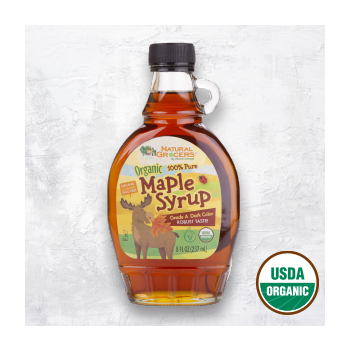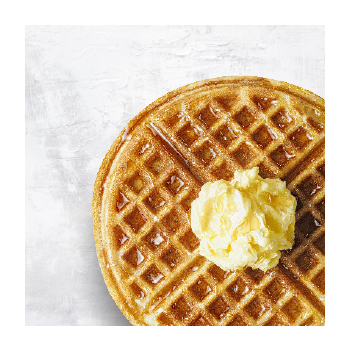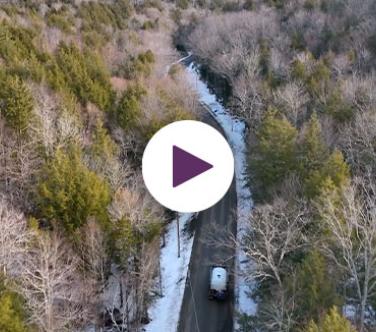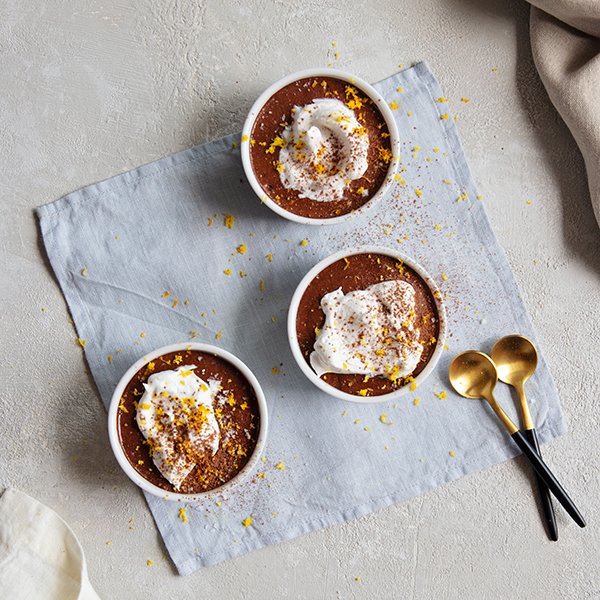


Sign-up for {N}power to get exclusive discounts, newsletters, members-only features, and more!
 Denver - Design District - Alameda and Broadway
Denver - Design District - Alameda and Broadway
368 S Broadway
Denver, CO 80209
United States
 Preferred Store:
Select a Store
Preferred Store:
Select a Store

Gathering maple tree sap to make sweet syrup for food and medicine is an ancient practice created by the Anishinaabe, Haudenosaunee, and Wabanaki people of northeastern North America.1 From pancakes to salmon, the sweet syrup was, and still is, used to cure meats, sweeten bitter medicines, and bring a warm sugary and woody flavour to breakfasts and dinners alike. This thousands-of-years-old tradition continues to offer a spoonful of manganese, potassium, and antioxidants with its syrupy sweetness.2
 There is a common misconception that organic and conventional maple syrups are not all that different. However, this couldn’t be further from the truth. While the use of pesticides may not be common, they are still used in conventional syrup production, including the use of glyphosate. But there’s so much more to organic maple syrup production. The organic certification includes an extensive list of requirements to protect biodiversity in the sugar bush (forest of maple trees) including other plants, animals, and microorganism. Other plants, animals, and insects are encouraged to live in and around the maple trees, keeping the soils rich and diverse, as opposed to monocropping. In Vermont, these specifications also include maintaining a range of young and old maples. To protect the soil and water in the area, nearby roads must be kept to a minimum and tapped trees cannot be marked with prohibited substances like synthetic paints. There are limits and specification for how many taps per tree and where to place them.3 Organic maple syrup certification means sustainably keeping whole forests biodiverse and thriving.
There is a common misconception that organic and conventional maple syrups are not all that different. However, this couldn’t be further from the truth. While the use of pesticides may not be common, they are still used in conventional syrup production, including the use of glyphosate. But there’s so much more to organic maple syrup production. The organic certification includes an extensive list of requirements to protect biodiversity in the sugar bush (forest of maple trees) including other plants, animals, and microorganism. Other plants, animals, and insects are encouraged to live in and around the maple trees, keeping the soils rich and diverse, as opposed to monocropping. In Vermont, these specifications also include maintaining a range of young and old maples. To protect the soil and water in the area, nearby roads must be kept to a minimum and tapped trees cannot be marked with prohibited substances like synthetic paints. There are limits and specification for how many taps per tree and where to place them.3 Organic maple syrup certification means sustainably keeping whole forests biodiverse and thriving.
 The requirements for organic certification don’t stop in the sugar bush.4 Organic producers cannot use galvanized containers at various points in the processing, which are known to leach lead.5 Meanwhile, conventional syrup producers often add synthetic defoaming agents that contain mono- and di- glycerides (man-made trans fats)—the final product is highly concentrated, which means every ingredient added in will be as well. Another common additive in nonorganic syrup is polyethylene glycol, derived from ethylene glycol, the main ingredient in antifreeze.6 Yikes! Keep that away from our pancakes!
The requirements for organic certification don’t stop in the sugar bush.4 Organic producers cannot use galvanized containers at various points in the processing, which are known to leach lead.5 Meanwhile, conventional syrup producers often add synthetic defoaming agents that contain mono- and di- glycerides (man-made trans fats)—the final product is highly concentrated, which means every ingredient added in will be as well. Another common additive in nonorganic syrup is polyethylene glycol, derived from ethylene glycol, the main ingredient in antifreeze.6 Yikes! Keep that away from our pancakes!
When we think about organic, we may imagine the field where the crop grows, or in this case a forest lush with maple trees, birds singing from their branches, while rabbits build burrows below. The organic forest is alive with diversity from soil to sky. It just so happens that maple trees forests are also rich carbon sinks, drawing carbon dioxide out of the air and storing it deep into the earth and the tree’s roots, branches, and leaves. In Maine, one of the U.S.’s biggest maple syrup producing states, an estimated 550 million metric tonnes of carbon are stored by maple and birch trees.7 Diversification is an important part of creating carbon sinks, and so choosing organic maple syrup means choosing biodiverse forests storing carbon.
Keeping nasty additives, pesticides, and heavy metals out of maple syrup is important so the salmon and pancakes can stay sweet. So go ahead and drizzle it on, just be sure it’s organic!



Sign-up for {N}power to get exclusive discounts, newsletters, members-only features, and more!


